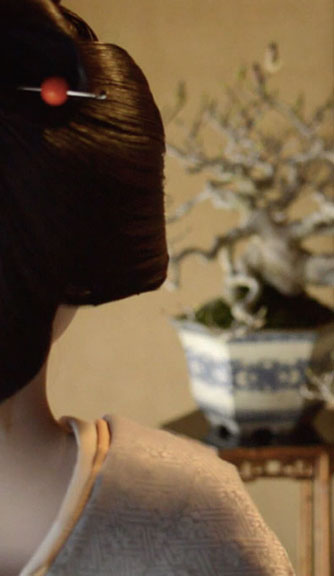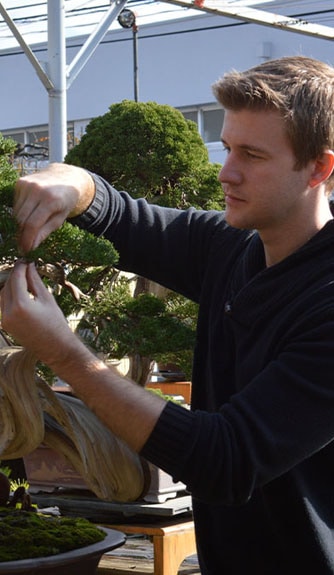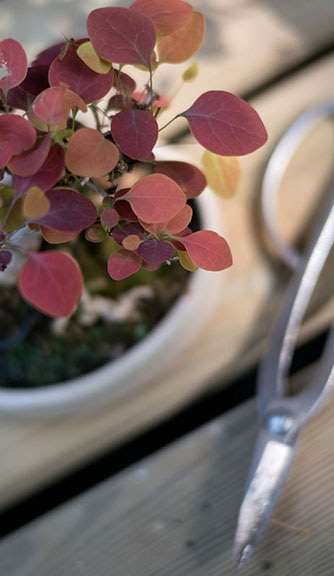Styling and shaping a Bonsai tree
The styling of Bonsai trees includes basic methods like regular pruning and wiring, but also more advanced techniques including the creation of deadwood. We apply these techniques to promote growth, manipulate our trees into the shape we desire, and to achieve natural and realistic results.
These topics are also discussed in our online Bonsai Courses, created with expert teachers.
Pruning Bonsai
Without a doubt, the most important way to train a Bonsai is to prune it regularly. There are two different techniques: Maintenance-pruning, to maintain and refine the existing shape of a Bonsai, and structural-pruning, which involves more rigorous pruning to give a tree its basic shape or style.
Wiring Bonsai
Wiring is a very important technique used to train and style Bonsai trees. By wrapping wire around the branches of a tree you can bend and reposition the branches to your liking. It takes a few months before the branches are set in their new position(s). Remove the wire once the branches have set.








